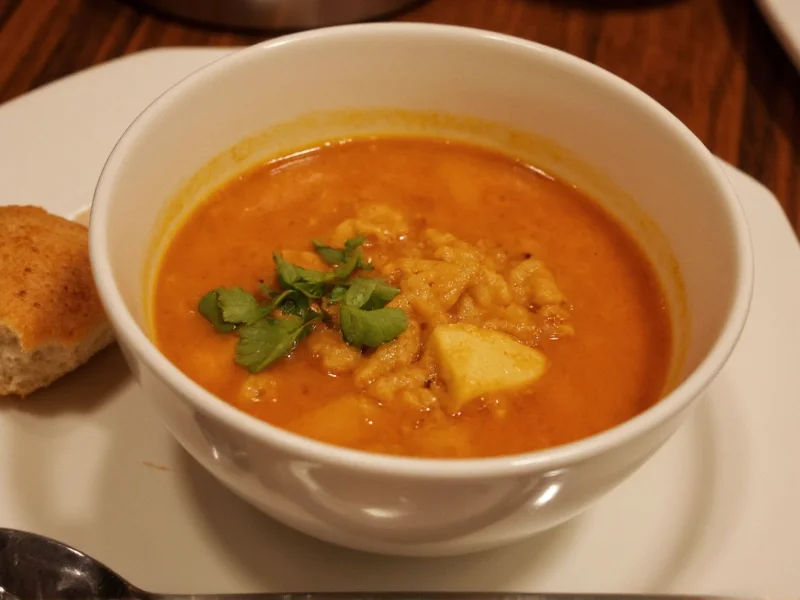Many people searching for “turtleneck soup” likely intend to find information about turtle soup, a historic dish with roots in European and American cuisine. This confusion stems from the similar pronunciation of “turtleneck” and “turtle” when spoken quickly. Understanding this terminology mix-up helps clarify culinary searches and prevents frustration when seeking authentic recipes.
What Is a Turtleneck?
A turtleneck refers exclusively to a type of clothing garment featuring a close-fitting, high collar that folds over itself. Common in sweaters, shirts, and dresses, turtlenecks serve as保暖 fashion items during colder months. The term entered fashion vocabulary in the 1920s and has no connection to food preparation or ingredients.
Turtle Soup: The Actual Culinary Dish
Turtle soup represents the dish people often mistakenly call “turtleneck soup.” This traditional preparation typically uses snapping turtles or sea turtles (where legally permitted) and features in cuisines across:
| Region | Traditional Preparation | Key Ingredients |
|---|---|---|
| United States (Mid-Atlantic) | Cream-based with sherry | Turtle meat, vegetables, spices, sherry |
| United Kingdom | Brown stock-based | Turtle meat, Madeira wine, herbs |
| Singapore/Malaysia | Clear broth style | Soft-shell turtle, ginger, Chinese herbs |
Historically popular in the 18th and 19th centuries, turtle soup appears in literature from Charles Dickens to F. Scott Fitzgerald. Modern versions often substitute other meats due to conservation concerns and legal restrictions on turtle harvesting.
Why the Confusion Happens
Linguistic similarities cause frequent mix-ups between these terms. When spoken aloud, “turtleneck” and “turtle” share phonetic elements that lead to misinterpretation, especially in:
- Verbal recipe sharing among friends or family
- Voice search queries with imperfect speech recognition
- Non-native English speakers navigating culinary terminology
- Rushed online searches where autocomplete suggestions mislead
Common Food Terminology Mix-Ups
This isn't an isolated case. Many culinary terms get confused due to similar sounds or spelling:
- "Cranberry sauce" vs "cranberry soup" - While sauce is standard, some mistakenly search for soup versions
- "Chicken noodle" vs "chicken knuckle" - Autocorrect errors create bizarre search results
- "Beef Wellington" vs "beef wallington" - Mispronunciations lead to failed recipe searches
How to Find What You're Actually Looking For
When searching for culinary information, try these strategies to avoid terminology traps:
- Verify spelling using culinary dictionaries before searching
- Add “recipe” or “dish” to your search terms for clarity
- Check multiple reputable food sources when results seem questionable
- Search for ingredient lists rather than dish names when uncertain
If you're interested in traditional turtle soup recipes, look for historical cookbooks or regional specialty sites focusing on Mid-Atlantic American or British cuisine. Many modern adaptations use alternative proteins while maintaining the rich, complex flavors characteristic of this historic dish.
Exploring Similar Culinary Confusions
Food terminology mix-ups extend beyond the turtleneck/turtle confusion. Consider these related search challenges:
- "Turtle soup vegetarian alternative" - Searches for meatless versions of the traditional dish
- "Turtleneck fashion history" - Correctly searches for the clothing item's background
- "Common misheard food terms" - Explores other culinary terminology pitfalls
- "How to pronounce turtle soup correctly" - Addresses the root of the confusion
Understanding these linguistic nuances helps both home cooks and professional chefs navigate recipe research more effectively. When in doubt about culinary terminology, consulting authoritative cooking resources or culinary dictionaries prevents wasted time and kitchen mishaps.
Is turtleneck soup a real dish?
No, turtleneck soup does not exist as a culinary dish. The term results from confusion between “turtleneck” (a clothing style) and “turtle soup” (an actual food dish made from turtles). No legitimate culinary tradition recognizes “turtleneck soup” as a real recipe.
What is the difference between turtleneck and turtle soup?
A turtleneck is a style of clothing with a high, folded collar, while turtle soup is a traditional culinary dish made from turtle meat. The confusion arises from similar pronunciation, but they belong to completely different categories: fashion versus food.
Why do people search for turtleneck soup?
People typically search for turtleneck soup due to a pronunciation mix-up between “turtleneck” and “turtle.” This confusion happens frequently in voice searches, casual conversation, or when non-native English speakers encounter similar-sounding terms.
Does turtle soup actually contain turtle?
Traditional turtle soup recipes do contain turtle meat, typically from snapping turtles or sea turtles. However, due to conservation concerns and legal restrictions, many modern versions use alternative meats like oxtail or veal while maintaining the characteristic rich broth and seasoning.
How can I find authentic turtle soup recipes?
Search for “traditional turtle soup recipe” or “historical turtle soup preparation.” Reputable sources include culinary history books, regional cookbooks from the Mid-Atlantic United States, or specialty food websites focusing on historic recipes. Be aware of legal restrictions regarding turtle meat in your area.











 浙公网安备
33010002000092号
浙公网安备
33010002000092号 浙B2-20120091-4
浙B2-20120091-4